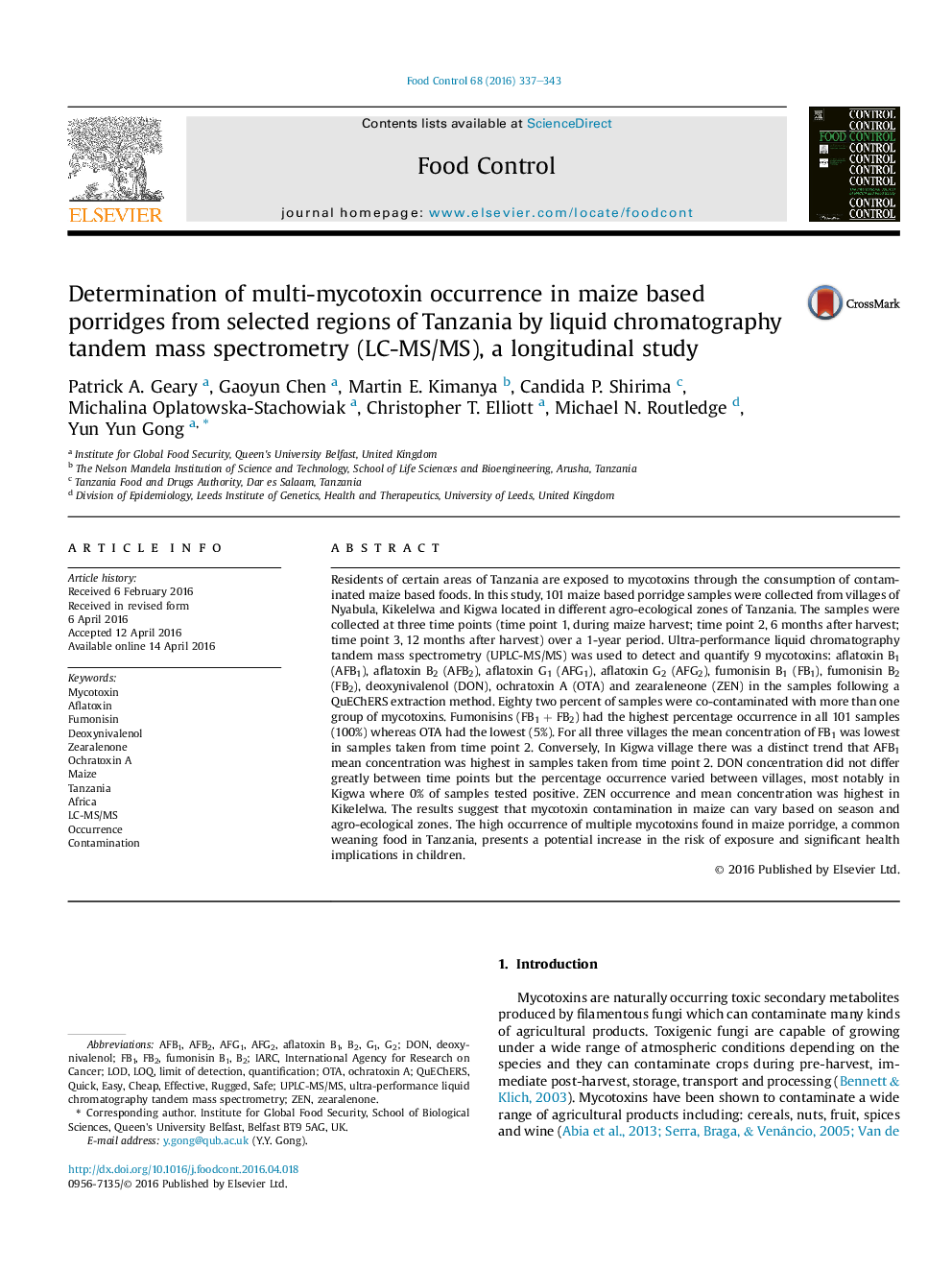| Article ID | Journal | Published Year | Pages | File Type |
|---|---|---|---|---|
| 4559059 | Food Control | 2016 | 7 Pages |
•LC-MS/MS used to detect mycotoxin contamination in maize from Tanzanian villages.•Mycotoxin co-contamination in maize samples was a common occurrence.•Both adults and children were at risk of consuming mycotoxin contaminated maize.•Mycotoxin contamination showed significant seasonal and geographical differences.
Residents of certain areas of Tanzania are exposed to mycotoxins through the consumption of contaminated maize based foods. In this study, 101 maize based porridge samples were collected from villages of Nyabula, Kikelelwa and Kigwa located in different agro-ecological zones of Tanzania. The samples were collected at three time points (time point 1, during maize harvest; time point 2, 6 months after harvest; time point 3, 12 months after harvest) over a 1-year period. Ultra-performance liquid chromatography tandem mass spectrometry (UPLC-MS/MS) was used to detect and quantify 9 mycotoxins: aflatoxin B1 (AFB1), aflatoxin B2 (AFB2), aflatoxin G1 (AFG1), aflatoxin G2 (AFG2), fumonisin B1 (FB1), fumonisin B2 (FB2), deoxynivalenol (DON), ochratoxin A (OTA) and zearaleneone (ZEN) in the samples following a QuEChERS extraction method. Eighty two percent of samples were co-contaminated with more than one group of mycotoxins. Fumonisins (FB1 + FB2) had the highest percentage occurrence in all 101 samples (100%) whereas OTA had the lowest (5%). For all three villages the mean concentration of FB1 was lowest in samples taken from time point 2. Conversely, In Kigwa village there was a distinct trend that AFB1 mean concentration was highest in samples taken from time point 2. DON concentration did not differ greatly between time points but the percentage occurrence varied between villages, most notably in Kigwa where 0% of samples tested positive. ZEN occurrence and mean concentration was highest in Kikelelwa. The results suggest that mycotoxin contamination in maize can vary based on season and agro-ecological zones. The high occurrence of multiple mycotoxins found in maize porridge, a common weaning food in Tanzania, presents a potential increase in the risk of exposure and significant health implications in children.
